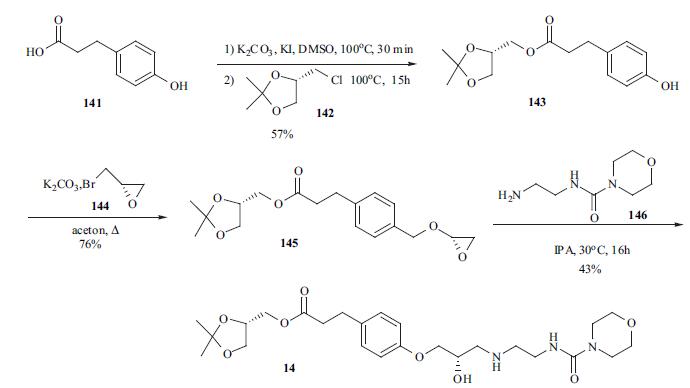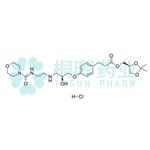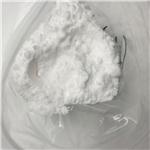Description
Landiolol hydrochloride (14) was launched in Japan by
Ono for the treatment of intraoperative tachyarrhythmia. It
improves tachyarrhythmia by selectively blocking β1
receptors located mainly in the heart and by inhibiting the
action of catecholamine.
Uses
Landiolol is an ultra-short acting beta blocker that is used to treat patients with cardiac arrhythmias and is also used to treat tachycardia during anasthesia.
Definition
ChEBI: Landiolol hydrochloride is a member of morpholines.
Pharmacokinetics
Landiolol hydrochloride has a β1/β2 ratio of 255, and, compared to propranolol, its β1-selectivity is 74–380 times greater while it has a 33–263 times greater β1 affinity than esmolol. This high β1-selectivity produces a more potent negative chronotropic effect and a less potent hypotensive effect. Work in rabbit animal models revealed a more rapid HR decrease with landiolol than with esmolol. In contrast, the decrease in mean arterial blood pressure (MAP) seen with esmolol was not observed with landiolol. Similar results were obtained in isolated rabbit and guinea pig hearts. Landiolol metabolism is mainly in the liver (approximately half) and plasma and is predominantly catalyzed by liver carboxylesterase and plasma pseudocholinesterase. In hepatically impaired patients, maximum concentration (Cmax) and area under the concentration (AUC)?time curve values were 42% and 44% higher, respectively. However, half-life did not differ compared with healthy patients, and no drug-related adverse events were observed[1].
Clinical Use
Landiolol hydrochloride, a highly cardio-selective beta-1 blocker with an ultra-short-acting half-life of 4 minutes, is widely used in Japan under the brand name Onoact®. β-blockers is useful in preventing refractory and urgent fatal arrhythmia and tachycardia in chronic phase.Recently, European Union health authorities have approved usage under the name Rapibloc®. Landiolol was originally approved by Japan for treatment of intraoperative tachyarrhythmias and was later approved for tachycardia atrial fibrillation (AF) and atrial flutter (AFL) during left ventricular (LV) dysfunction in November 2013. More recently, landiolol expanded its utility into usage for fatal arrhythmia requiring emergency treatment in 20196 and is fast becoming a reliable therapeutic choice for management of arrhythmia in acute phase[1].
Synthesis
The synthesis of landiolol
appeared in an earlier patent in 1990. Esterification of 3-
(4-hydroxyphenyl)propionic acid (141) with 2,2-dimethyl-
1,3-dioxolan-4-ylmethyl chloride (142) in DMSO gave
desired ester 143 in 57% yield. Treatment of phenol 143
with bromo epoxide 144 in the present of K2CO3 afforded
ether 145 in 76% yield. Epoxide 145 was then reacted with
free amine 146 via a neucleophilic ring opening process to
provide landiolol (14).

References
[1] Yujiro Matsuishi. “Evaluating the Therapeutic Efficacy and Safety of Landiolol Hydrochloride for Management of Arrhythmia in Critical Settings: Review of the Literature.” Vascular Health and Risk Management 16 (2020): 111–123.






